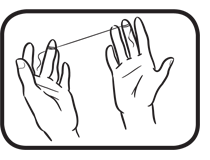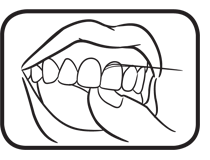Is Flossing Necessary?
Although many people overlook the benefits of flossing, it is just as important for your dental health as brushing your teeth and using an antibacterial mouthwash. One in four adults between the ages of 20 and 64 currently have at least one cavity, according to a recent CDC report. Cavities and periodontal disease can both result in costly dental appointments. Ultimately, the more proactive and dedicated you are to prevention, the less issues you will have to address when it comes time for scheduled cleanings.
Benefits of dental flossing:
1. Removes plaque
An essential component of general dental hygiene is flossing. Dental flossing is not the same as mouthwash or brushing your teeth. Mouthwash swishing gets between your teeth for a final cleaning, while brushes clean the crowns of your teeth and their exterior surfaces, including your gums. But neither of these offices takes care of your dental care in its entirety.
Dental floss functions as an interdental cleaner, which means that it cleans between teeth gaps and beneath the surface where your gums and teeth meet, in contrast to mouthwash and toothbrushes. These are the areas where plaque accumulates and your toothbrush cannot reach.
Plaque is caused by bacteria. The first stage is the formation of a thin film on your teeth, which is typically caused by the foods you eat, particularly those high in sugar. Plaque turns into tartar, a brownish residue that forms under your gums and on the surfaces of your teeth. Plaque is easily removed with a regular cleaning schedule. However, once it solidifies into tartar, your dentist or hygienist can only manually scrape it off.
If you floss on a daily basis and incorporate it into your dental care routine, it doesn't have to be.
2. Decreases the risk of developing cavities
Cavities, which are tiny holes or openings in the enamel, the hard-outer layer of your teeth, can be caused by tooth decay.
Your chance of getting a cavity increases with the amount of plaque on your teeth's enamel, even though this process takes time. Flossing between your teeth can help remove plaque and food particles that are hidden in between your teeth, reducing your chance of developing tooth decay.
3. Helps in preventing gum disease
The initial stage of gum disease is called gingivitis. The inflammation surrounding your gums is one of the earliest indicators of gingivitis. Additionally, when you brush or floss your teeth, your gums may bleed.
Gingivitis can develop into periodontitis, a more serious infection, if left untreated. Your gums may recede or separate from your teeth as a result of this. Teeth can become loose and lose their support from the bone. If left untreated, periodontitis can make your entire body become inflamed.
You can lower your risk of gum disease by flossing your teeth every day.
4. Decreases foul breath
Halitosis, or bad breath, is a frequent concern. However, one method you can use to prevent bad breath is flossing.
Food slowly begins to deteriorate when it becomes stuck in between your teeth. Your breath may smell bad if you don't get rid of the food particles.
Additionally, gum disease and cavities can result from plaque accumulation around or between your teeth, which erodes the tooth enamel and causes bad breath.
5. May improve your overall health
Taking good care of your teeth is essential to keeping the body's systems in balance. Numerous clinical studies have connected inadequate oral hygiene to systemic illnesses in which bacteria enter the bloodstream due to inflammation caused by gum disease and dental decay. The liver releases "C-Reactive Proteins" in an effort to repel the invasion as a result of the bacteria's "ravaging"-induced inflammation. It is well recognized that inflammation resulting from inadequate dental hygiene practices is a primary cause of heart disease, diabetes, pneumonia, dementia, kidney disease, and erectile dysfunction.
Types of floss:
- 1. Waxed and un-waxed thread
- 2. Superfloss
- 3. Floss picks
- 4. Air flossers
- 5. Water flossers
How to floss:
1. Tear off about 18 inches of floss, encircling one middle finger with the majority of it. The remaining floss should be wound around the same finger on the other hand. As you proceed, this finger will pick up the floss.

2. Tightly grasp the floss with your thumbs and forefingers

3. Make light pressure points with the floss as you move it between your teeth. Never sever your floss from your gums.

4. Curve the floss into a C shape against a single tooth when it reaches the gum line. Slide it gently into the gap created by the gums and the tooth.

5. Press the floss firmly against the tooth, keeping it just out of the gum line. Carefully massage the tooth's side in an upward and downward motion, taking note of the tooth's shape. Apply the same technique to the top and bottom of the remaining teeth. Remember the back of your mouth, where your final teeth are located.

